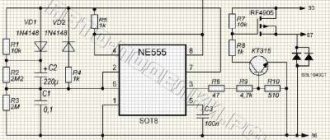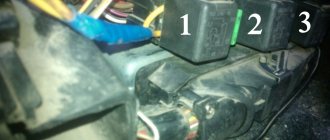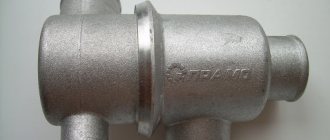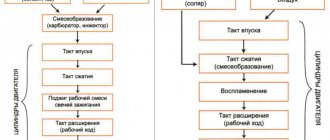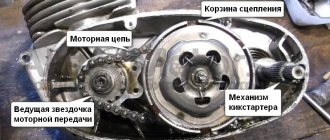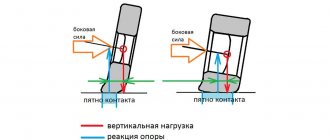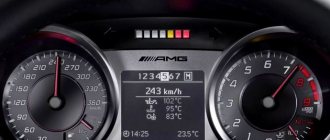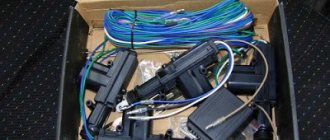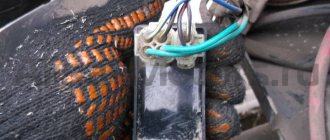Since failures occur, many owners will be interested in learning how to repair a viscous fan coupling with their own hands. Many owners of cars with such a device advise not to rush to throw it away, but to try to repair it themselves. According to many of them, this is not difficult to do. To begin with, it is advisable to get acquainted with its structure and operating principle and only then begin repair work. The reasons why people begin to pay attention to the viscous coupling are usually overheating of the engine during normal operation of the thermostat and other elements of the cooling system.
Do-it-yourself repair of a viscous fan coupling often has to be done after a long period of engine downtime, prolonged operation, and also for some other reasons. By installing it on an internal combustion engine, one goal is pursued: a smooth increase in fan speed as the engine warms up. As the operating temperature of the coolant increases, the fan speed should increase.
A little about the device
A viscous coupling is a device whose operating principle is the ability to transmit rotational motion through a special liquid that is pumped into it. It can be imagined as a small round chamber filled with silicone-based lubricant. There are two shafts inside this chamber, and the operating principle is as follows. The crankshaft performs a rotating motion, which is transmitted to the first clutch shaft. With increasing loads on the disk, its rotation speed becomes higher, this leads to an increase in the viscosity of the silicone inside the coupling.
The clutch is blocked, which leads to rotation of the second disk, on the shaft of which the radiator cooling fan is mounted. Another principle for turning on this device is the temperature properties of the pumped silicone grease. These properties are used to turn on the cooling fan when the engine temperature rises. As the temperature increases, it turns on, and when it decreases, it turns off.
The widespread use of couplings on modern engines is due to its high reliability and safety. If you handle it carelessly, if your hand gets into the rotation zone, it stops without damaging the hand.
Advantages and disadvantages
p, blockquote 42,0,0,0,0 —>
A malfunction of the cooling system is a critical malfunction of the car, in which further independent movement is impossible. Therefore, the main consumer characteristic of a viscous coupling is reliability. From this position, it is higher than in the case of an electric radiator fan.
p, blockquote 43,0,0,0,0 —>
Many car owners are familiar with the problem when, after the winter season, they have to repair the electric drives of the radiator fans and the electronic control circuit of the engine cooling system. There are no electrics or electronics in the viscous coupling system, which is a big plus.
p, blockquote 44,0,0,1,0 —>
Another advantage of a viscous coupling is the greater power it can provide to the fan shaft. Theoretically, this power can be equal to the entire shaft power of the internal combustion engine, that is, several kilowatts. Electric motors for radiator fans of passenger cars have a power of about several tens of watts. Therefore, the use of viscous couplings has not yet been abandoned in powerful agricultural, construction, and military equipment.
p, blockquote 45,0,0,0,0 —>
p, blockquote 46,0,0,0,0 —>
- the complexity of the technical design, the difficulty of repair, it is easier and cheaper to replace it as a unit (entirely);
- has a large mass, exerts a mechanical load on the shaft;
- control of its switching temperature is not sufficiently accurate;
- increased noise at high engine speeds;
- when carrying out routine maintenance, it is necessary to fill (refill) the viscous coupling with gel or oil of a certain viscosity; such technical characteristics are difficult to find in reference books;
- additional engine power take-off.
These and other shortcomings have practically replaced viscous couplings from cooling systems of internal combustion engines of passenger cars.
A few words about signs of malfunctions
There are very few such signs, but they exist, let's try to figure them out. Most manuals for car operation and repair advise checking how the fan rotates when the engine is cold and hot. It is also stated there that on a cold engine no significant changes in the rotation speed are noticeable during throttling, but on a hot engine, on the contrary, it increases.
The longitudinal play of the clutch fan should be checked; if it is present, it requires treatment. The appearance of extraneous noise during rotation may indicate bearing failure. Malfunctions also include aging of sealing seals. However, the most common type of malfunction is leakage of silicone fluid from the coupling body.
Disadvantages of viscous coupling
One of the most significant disadvantages of a viscous coupling is its “disposability”. In most cases, the part cannot be repaired, and the repair work itself requires a lot of effort and financial investment, so motorists are considering the option of purchasing a new part.
In addition, the drive cannot be connected manually, and its efficiency is quite low.
Maximum torque is transmitted only under heavy braking.
Most viscous coupling models are small in size, so when located at the bottom of the system, there is a limitation in the transmission of torque to the rear axle.
Such a device is not able to work for a long time and withstand impressive loads
. Otherwise, it will quickly deform and become unsuitable for further use. Prolonged driving on off-road, mud or ice will cause the viscous coupling to fail and need to be replaced.
What is done in such cases?
Since fluid leaks from the coupling most often occur, let's talk about this first. To replenish it, you need to remove the viscous coupling from the water pump, and then start disassembling it. On the removed device, under the spring plate, there is a filler hole for working fluid. With the coupling removed, carefully pull out the pin and inject the missing amount of liquid with a syringe. Most often it is recommended to fill the clutch with transmission oil.
When replenishing fluid, place the coupling horizontally with the hole facing up. Approximately 10-15 ml is drawn into the syringe. liters of transmission oil and insert it into the filler hole without a needle. Squeeze out the liquid and wait for a while without removing the syringe from the hole. After this, wipe off excess oil from the surface of the coupling body and put the pin in its place. The product is ready for further use.
Purpose of the fluid coupling and its role in the cooling system
The fluid coupling has several undoubted advantages and disadvantages over the viscous coupling and electric fan drive, which determines its wide distribution. Compared to a viscous coupling, a fluid coupling works more reliably and efficiently; it switches on and off more clearly, ensuring reliable cooling of the radiator. And compared to an electric drive, a hydraulic clutch makes an entire electrical circuit with its fuses, relays, sensors and wiring unnecessary. At the same time, the more complex design of the fluid coupling is fully compensated by its reliability and efficiency, which are not available to the viscous coupling and electric motor.
About replacing bearings
The signal for such an operation is noise in the area of operation of the radiator cooling fan. To repair it, the viscous coupling must be removed from the car. In most cars it is installed on the water pump pulley. This ensures reliable thermal contact with the coolant. You need to unscrew the three bolts that secure it, and it easily comes out of the engine compartment.
After this, you can start replacing the bearing. This operation can only be performed after completely disassembling the unit and draining the liquid. In the future it will be replaced with a fresh one. The bearing must be removed only using a puller, otherwise the entire assembly can be damaged. After installing the new bearing, it is assembled and filled with liquid.
No matter what happens, do not rush to throw away the old knot and buy a new one, if it has not fallen apart at all. Do-it-yourself repair of a viscous fan coupling is a completely accessible operation that does not require special knowledge or tools. A bearing puller can be found from colleagues in a garage cooperative; the rest is not in short supply today.
Hello again everyone!
How the device works
It was invented in the USA in 1917 by engineer Melvin Severn. This product did not immediately find its application, so it was not recognized for a long time. In 1964, a viscous coupling was installed in the Interceptor FF, where it acted as an automatic differential lock. Only in 1965 did this mechanism take its place in the engine.
A viscous coupling is a device that is responsible for rotating a special fan that cools the system thanks to a special liquid. It looks like a round mechanism made of a silicone base and filled with a lubricant. The viscous coupling ensures smooth fan control.
There are flat disks inside the product body. Some of them are connected to the drive shaft, while others are connected to the driven shaft. There are various protrusions and holes on their surface. Design features place these elements in close proximity to each other. The silicone liquid located inside tends to thicken with strong stirring. It also expands when heated, so it creates a lot of pressure on the disks when the engine is running and compresses them together.
Features of the mechanism
At first glance, the operating principle of a viscous cooling fan coupling seems complicated, but it is not. The movable crankshaft is driven into rotation and transfers its energy to the clutch. This makes its silicone base softer and more viscous. The clutch begins to block, causing the second disk with the fan to rotate.
Almost every engine has a viscous coupling. This is due to the importance of its functions and the quality of the device, because it is at a fairly high level. The viscous coupling has an excellent safety mechanism: when a person, through his own negligence, puts his hand into the moving element, he will stop to prevent injury.
Areas of application of viscous coupling
Previously, there were two areas of application for viscous couplings, but today their number has been reduced to one. In the recent past, a similar mechanism was intended for comprehensive engine cooling, which was possible by attaching a special viscous coupling with a ventilation device to the rod. Its movement is determined by the crankshaft of the car, to which the belt is laid. Depending on the engine rotation speed, the liquid acquires different thicknesses and receives a rigid connection with the fan.
When the speed decreased, no strong mixing occurred, i.e. if slippage was present, the cooling process of the system was not good enough. It is advisable to use the product as a full-fledged element of the cooling system only in the cold winter season, when the engine is not very warm and needs to provide additional cooling.
A more popular application is to provide automatic connection to an all-wheel drive system.
In this area, viscous couplings are extremely relevant, because most SUVs, crossovers and SUVs are equipped with such units. Even the rapid growth in popularity of advanced electromechanical options does not spoil the great popularity of viscous couplings.
The product is in great demand due to the following advantages:
- affordable price;
- practical application;
- versatility.
However, in addition to the advantages, viscous couplings also have disadvantages.
Checking the cooling fan
It is not always possible to use the car regularly, so it ends up in a state of downtime. At this time, the viscous coupling requires checking its performance. This will also help prevent damage from wear and tear.
Recognizing a malfunction is not easy under normal conditions, but there are methods for checking the viscous coupling of a fan. To inspect the mechanism, you need to check the speed of the product with the engine turned on, warm and cold. When the engine is cooled, there should be no extraneous sounds, and the speed should be normal. A hot engine can often provoke various noises and irregularities in the speed.
Such problems can arise due to faulty bearings or untimely oil changes. Also, sealed seals and leakage of silicone fluid can cause failure.
Solving the problem yourself
If defects in operation are found, the viscous coupling does not always have to be replaced. These problems can often be solved on your own. One of the most common problems encountered with this device is silicone fluid leakage. To make up for the deficiency, you need to do the following:
- Disassemble the viscous coupling by removing it from the water pump.
- It's worth taking a closer look at the product's disk. On its surface there is a special plate with a spring, under which there is a hole for silicone. It is necessary to remove the pin with extreme caution and pour lubricant inside using a special syringe. During this process, the part itself must be placed in a horizontal position.
- It will be enough to pour 15 milliliters of liquid into the syringe.
- You need to wait a few minutes until the substance flows into the viscous coupling without removing the syringe.
- After checking that the procedure was performed correctly and that there is no excess silicone, the part can be installed back.
For those who do not consider themselves experienced motorists, it is better not to engage in such work, because this can cause complete breakdown of the device. Typically, the biggest challenge is putting everything back together.
Other problems
Bearings can often cause failure of a viscous coupling. This is evidenced by the appearance of unusual noises in the cooling zone. But you can also repair it yourself:
- To repair the product, it must be removed from the main motor structure. To do this, unscrew the 3 bolts on which the bearings are attached.
- These elements should be replaced only after the oil fluid has been drained and the unit has been disassembled. To simplify the process, you can use a special tool - a puller. You should not use improvised devices, as they can permanently damage the parts.
- After installing the bearing, you can install the entire device into the motor mechanisms. Before this, you need to fill in fresh silicone, which was drained before replacing parts.
Note: incorrect behavior of parts does not always require their immediate replacement. Often you can get by with simple repairs that do not require special skills.
A common problem when checking a viscous coupling or replacing bearings is finding the right tool. Such a puller is not always easy to find in a car dealership, so repairs can be difficult.
Types of viscous couplings
On the automotive spare parts market you can find two main types of viscous couplings:
- The first type is characterized by a constant volume of amateurish liquid.
- The second type has a different volume of silicone, which changes depending on external influences.
The first type of viscous coupling is used for limited slip differentials in transmissions, including automatic all-wheel drive systems. They are used in internal cooling systems.
If the part operates in normal mode with average loads, and the car moves on a high-quality road surface, the angular velocities of the two axes remain the same.
The rotation of the clutch discs is almost uniform, and torque is transmitted from the engine to the driven axle with minimal load. As a result, the vehicle can operate in both all-wheel drive and rear-wheel drive.
But if the car gets into rough terrain or drives on ice and mud, the uniformity of rotation is seriously reduced, and the viscosity of the silicone increases significantly. This increases the transmission of torque to the second axle. In some cases, the power transfer rate reaches 100 percent.
At the same time, the viscous coupling cannot replace a full-fledged differential, which redistributes the torque of the power plant to both axles. It is advisable to use this design on uneven surfaces and rough terrain. It will also be justified when driving:
- on ice;
- city streets;
- wet track.
If driving is carried out completely off-road, the clutch should engage instantly. otherwise, the torque transmission system will fail, resulting in the need for expensive and complex repairs.
In most modern cars with automatic transmissions, viscous couplings operate in the so-called “pre-start mode”. It is characterized by a uniform transfer of 5-15% of the motor power to the driven axle, which negatively affects the reaction time of the unit.
Features of repair work
As some motorists may have noticed, the viscous coupling does not always have a hole for filling silicone fluid. In this case, you can do it yourself, but beginners should not do this so as not to damage the product. It is better to turn to craftsmen who will do careful drilling.
Repair of the viscous fan coupling should be carried out without brute force. The main material of the device is aluminum, which can simply be bent and completely destroy the viscous coupling.
The operation of a car depends on many mechanisms that must work as a whole. If even one element fails, the serviceability of the entire vehicle is disrupted. The viscous coupling is necessary for the normal operation of the cooling fan. The safety of the trip depends on this, so you need to monitor its performance.
Repairs to the viscous cooling fan coupling should only be carried out by specialists. Of course, you can do this yourself, but any mistake can damage the device. You need to take care of service work in advance.
How repairs are made
The first thing a car enthusiast should pay attention to is engine overheating. Perhaps it is the viscous coupling that is connected to it, although it is worth checking, for example, the thermostat. If the problem lies specifically in the viscous coupling, it is worth trying to repair it. Although many descriptions say that replacing silicone liquid is impossible and it is poured into the case once until the entire device is disposed of, in practice, adding fresh liquid is very simple. The only problem is to find it. In both offline and online stores it can be found under the names “ viscous coupling repair fluid ”, “ viscous coupling oil ” or simply “ silicone fluid ”.
If we are talking about repairing a viscous coupling in an all-wheel drive system, then you should buy the original one - inexpensive analogues are not viscous enough. And if you are repairing a viscous fan coupling, you can buy a universal fluid.
